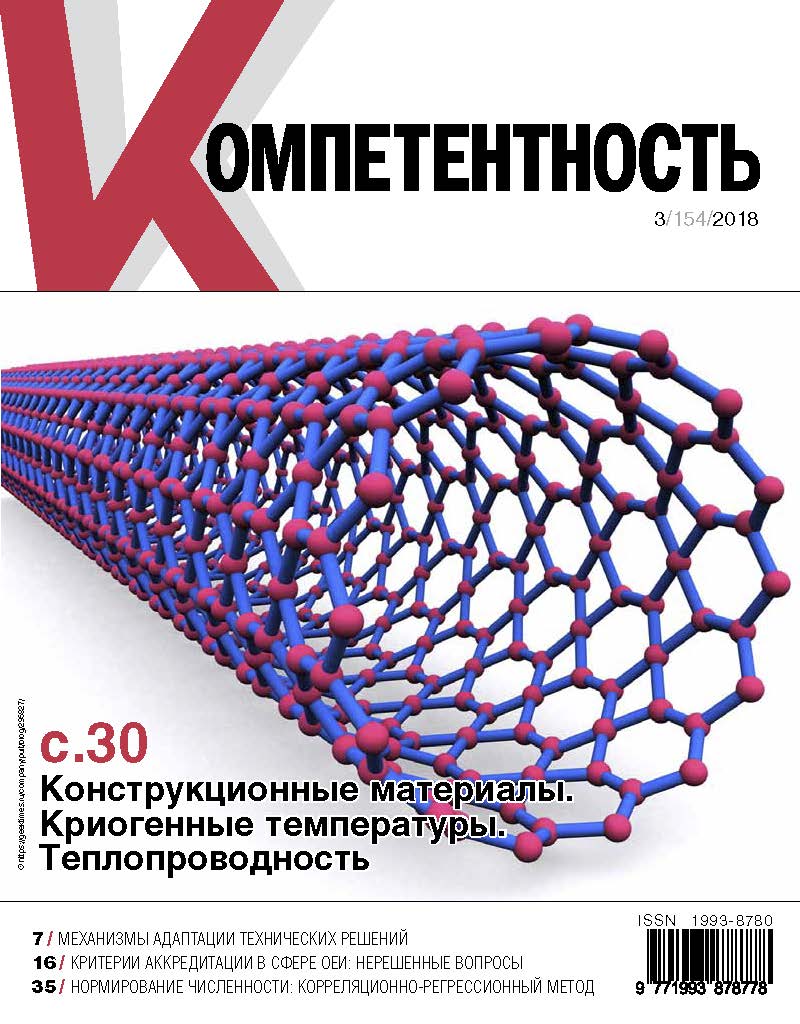Journal Kompetentnost': 3 / 154 / 2018
Articles
-
1
Academy of Standardization, Metrology and Certification Today
Authors: Assoc. Prof. Dr. Yu.A. Baryshev, Head of Department Electrical Measurements FSAEI FVT Academy of Standardization, Metrology and Certification (training), Moscow, Russia, baryshev@asms.ru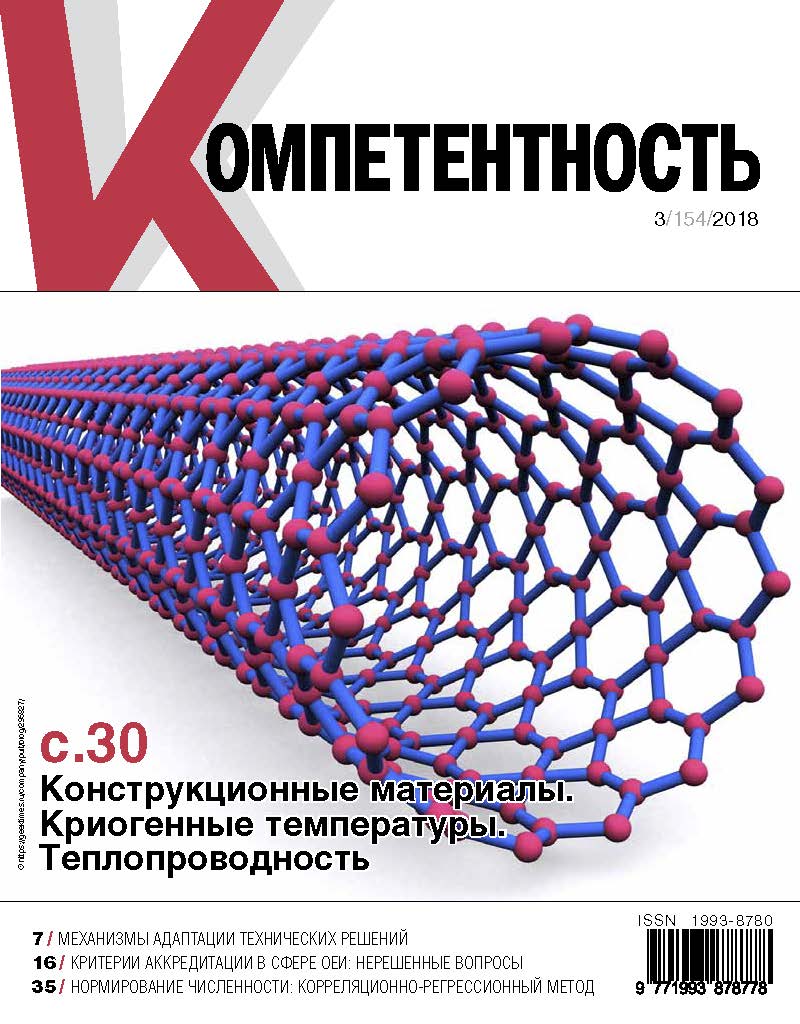 I examine one of the urgent problems of the system of additional education in our
I examine one of the urgent problems of the system of additional education in our
country. Insufficiency of such important component as the professional development
of specialists, including metrology specialists. In my opinion, a great contribution
in the solution of this problem can make ASMS — the leader of domestic additional
education. More than 200 thousand domestic and about 6 thousand foreign specialistsmetrologists
have already passed training at the metrology departments of the
Academy. In recent years, the departments have moved to the modular principle
of training, taking into maximum account the individual interests of the listeners
and needs of the customer companies, the great work is being done to provide
methodological support for the long-distance education of students who can improve
their qualifications on the job.
Download -
2
Mechanisms for Adaptation of Technical Solutions to the Russia Defense Ministry’s Requirements
Authors: Assoc. Prof. Dr. S.S. Smirnov, Deputy Head of Department FSBI «46 Central Research Institute» Ministry of Defense of Russia, Moscow, Russia, sss-smirnov@mail.ruAssoc. Prof. Dr. R.V. Reulov, Deputy Head of Department FSBI «46 Central Research Institute» Ministry of Defense of Russia, Moscow, Russia, rreulov@yandex.ruDr. S.V. Stukalin, Head of Laboratory FSBI «46 Central Research Institute» Ministry of Defense of Russia, Moscow, Russia, svstukalin@gmail.com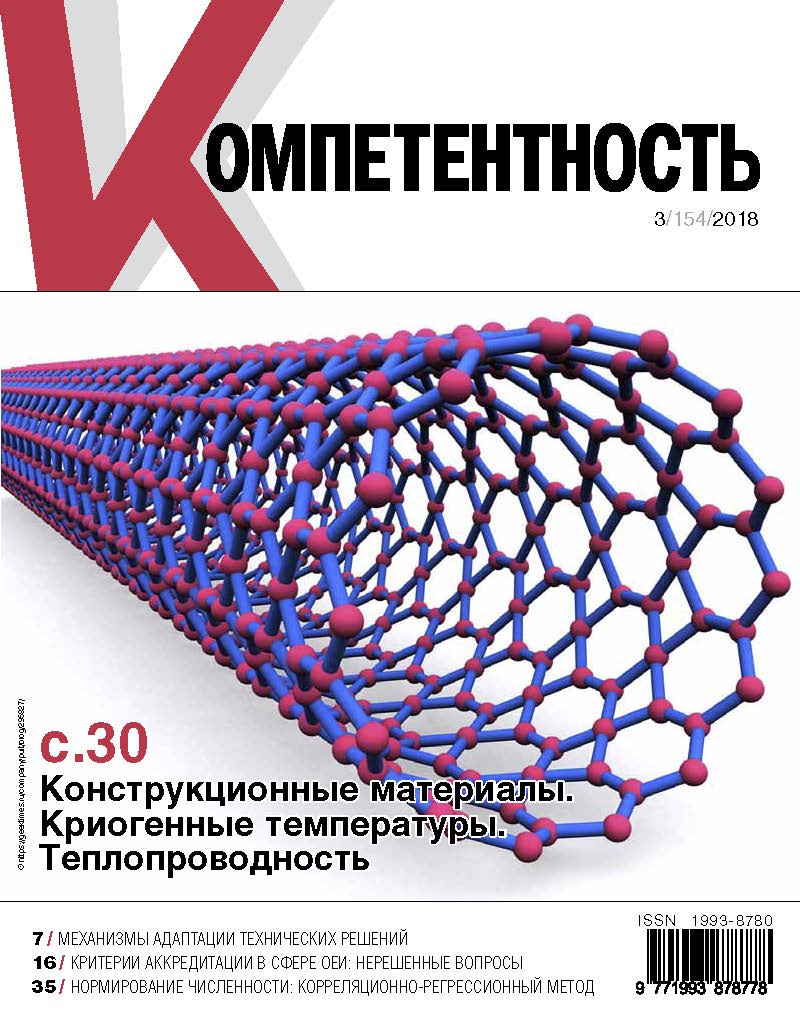 We examined the mechanisms for adapting technical solutions received by the
We examined the mechanisms for adapting technical solutions received by the
organizations of the defense industry, higher education, state scientific centers and
small companies, to the requirements of the Ministry of Defense of Russia. We believe
that knowledge of these mechanisms and the method of their use will help to reduce
the timeframes for the transition from the prototype stage to approbation and the
introduction of technical solutions into the AMST models. And the terms of the
transition depend on the levels of novelty, elaboration, readiness of the received results
of scientific and technical activity, possible directions of use, risk of non-receipt of
the declared result and resource provision. We believe that all this will significantly
reduce the timeframe for the arrival in the Armed Forces of the Russian Federation of
new models and weapons systems based on innovative approaches and breakthrough
technical solutions.
Download -
3
Accreditation Criteria in the field of Ensuring the Uniformity of Measurements: Outstanding Issue
Authors: Assoc. Prof. Dr. V.E. Kovlyakova, Associate Professor, Department of Conformity assessment, FSAEI FVT ASMS, Advisor of the State Civil Service of the Russian Federation and Moscow, Technical Expert for Accreditation, Moscow, Russia, sdsniir@mail.ru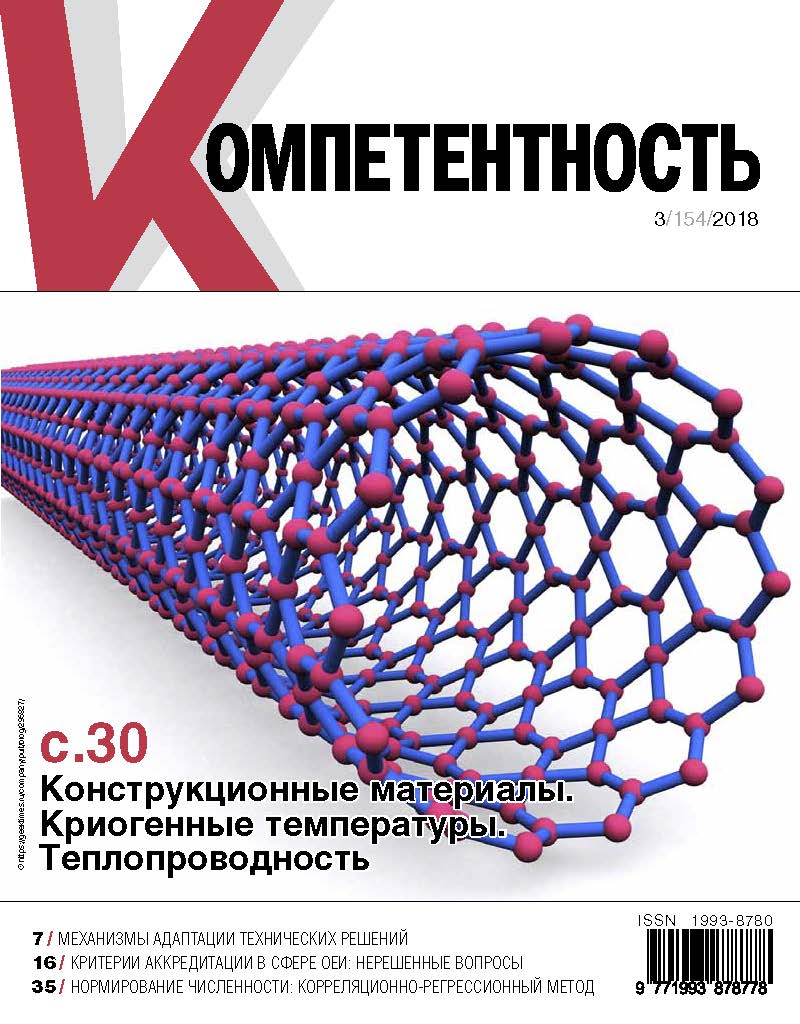 I examined the problematic issues of applying the criteria for the accreditation of
I examined the problematic issues of applying the criteria for the accreditation of
legal entities and individual entrepreneurs in the field of ensuring the uniformity of
measurements. analyzed individual positions within the legislative aspect of the two
spheres, identified key positions for the development of common conceptual approaches.
I believe that the accuracy and variety of measurements characterize the level of the
economy development, which makes it necessary to advance the development of a
system for ensuring the uniformity of measurements. Therefore, the system for ensuring
the uniformity of measurements should respond flexibly to all changes that occur in
individual sectors of the economy in terms of testing and measurement. Undoubtedly,
the expansion of Russia’s activities in international metrology organizations will help
to strengthen its authority abroad and increase the competitiveness of Russian goods
on international markets.
Download -
4
Acceptance Control of Finished Product. QMS Process Design
Authors: Dr. K.V. Zhegera, Associate Professor of Department, Penza State University of Architecture and Construction, Penza, Russia, jegera@yandex.ruDr. N.A. Petukhova, Associate Professor of Department, Penza State University of Architecture and Construction, Penza, Russia, npetukhova58@mail.ruG.M. Kudratova, Magistracy Student, Penza State University of Architecture and Construction, Penza, Russia, kudratova96@list.ru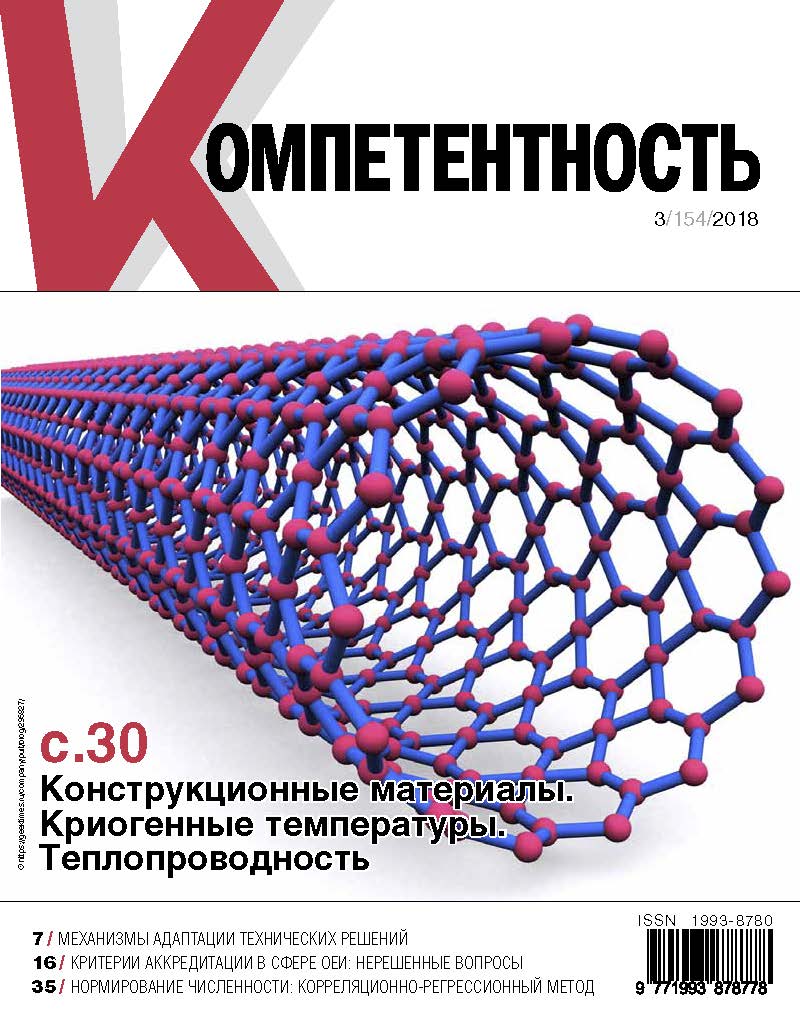 The quality management problem’s enterprise is one of the factors of increasing
The quality management problem’s enterprise is one of the factors of increasing
competitiveness. We chose the acceptance finished products process, which plays an
important role in ensuring the quality and safety of products.
We examined the main processes of the quality management system at the
enterprise, presented the scheme of their interaction, made up the SADT-model of
the finished products acceptance process. Its reflects the way of implementing the
agreed and reliable structural decomposition. We also developed a process passport and
compiled a table for recording quality records.
We believe that the development of the Acceptance Control of Finished Products
process will allow to optimize the work of the enterprise, prevent the production of
defective products and will provide an opportunity to learn the needs of customers
through surveys. All this will increase the competitiveness of products which will
increase the competitiveness of products.
Download -
5
Thermal Conductivity Measurements of Structural Materials at Cryogenic Temperatures
Authors: Assoc. prof. Dr. А.F. Brodnikov, Associate Professor, Novosibirsk Branch, FSAEI FVT Academy for Standardization, Metrology and Certification (FSAEI FVT ASMS), Novosibirsk, Russia, mainbox@asmsnsk.ruV.I. Kondrat’ev, Researcher, Budker Institute of Nuclear Physics of Siberian Branch Russian Academy of Sciences (BINP SB RAS), Novosibirsk, Russia, V.I.Kondratyev@inp.nsk.suDr. Prof. V.Ya. Cherepanov, Professor, Novosibirsk Branch, FSAEI FVT ASMS, Novosibirsk, mainbox@asmsnsk.ru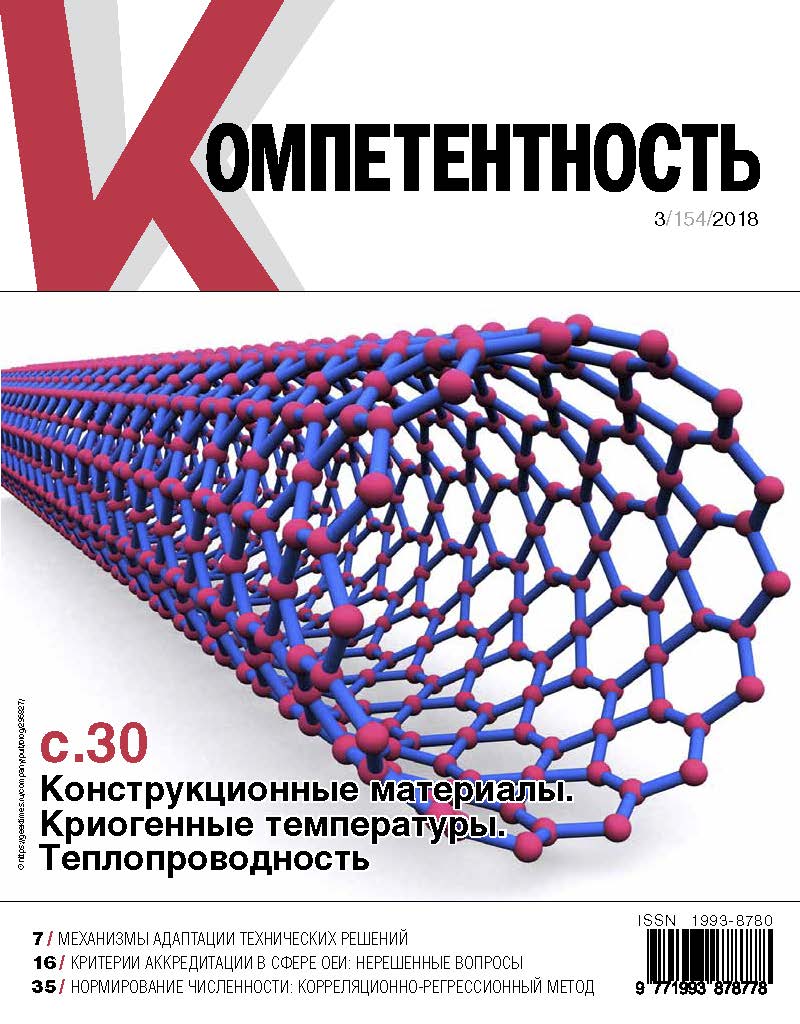 We considered a method and a measuring device designed to determine the
We considered a method and a measuring device designed to determine the
thermal conductivity of existing and newly created composite materials. It used in
superconducting magnets and other objects of cryogenic technology. We presented the
results of investigations of the temperature dependence of the thermal conductivity
of new promising materials based on gadolinium, boron and carbon nanotubes in the
range from 7 to 300 K.
The obtained measurement results are the basis for the development of a technology
for manufacturing new composite materials with given values of thermal conductivity
and the nature of its temperature dependence in the region of cryogenic temperatures,
we believe. Created measuring system allows for the entrance compliance control of the
data on the thermal materials conductivity coming from the manufacturer to its actual
values.
Download -
6
Regulation the Staffing by the Correlation- Regression Method
Authors: Dr. L.P. Maysuradze, Associate Professor, Department of Industrial Logistics, Faculty of Engineering Business and Management, N.E. Bauman Moscow State Technical University (MSTU), Moscow, Russia, lubov4may@gmail.comV.A. Tret’yakova, Undergraduate Student, Department of Industrial Logistics, Faculty of Engineering Business and Management, MSTU, Moscow, Russia, tva@bmstu.ru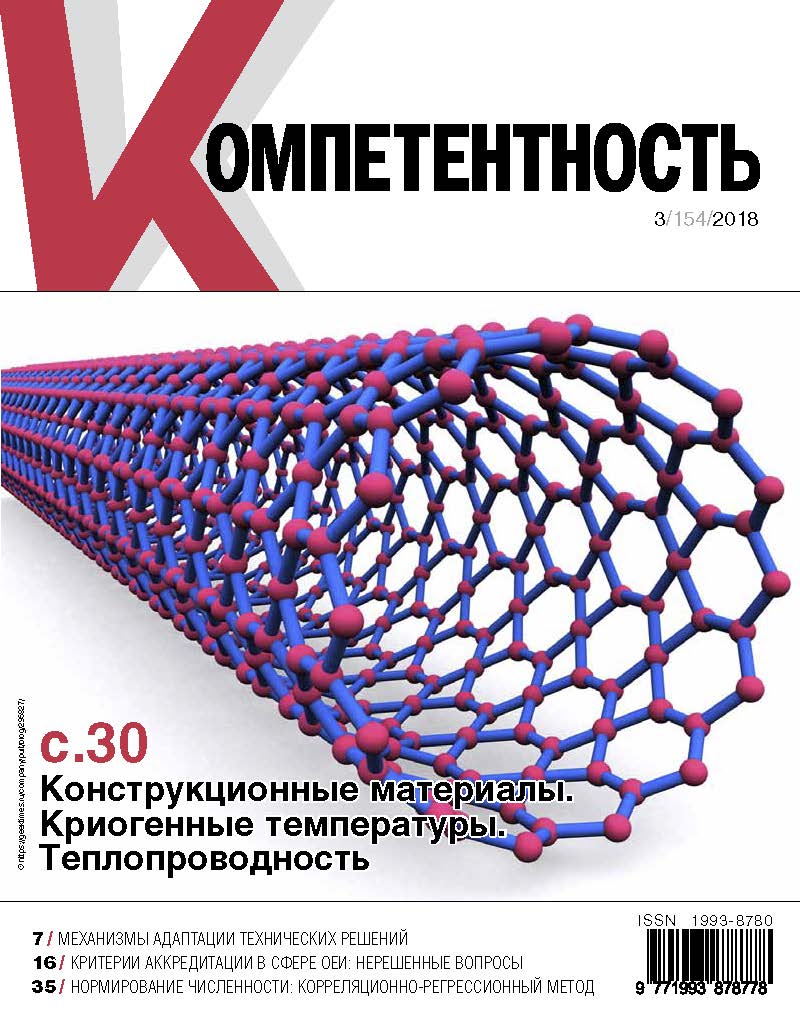 We examined the correlation-regression method for calculating the number of accounts
We examined the correlation-regression method for calculating the number of accounts
as one of the methods of labor standardization, and they resulted in a generalizing
calculation algorithm. We have shown that with the help of cause-effect relationships
the method allows calculating the staffing rate for an enterprise that has branches
with units performing the same functions. The method also allows you to determine
the required number of employees when opening a new branch. Of course, the more
enterprises are considered, the more accurate regression coefficients will be obtained,
but for an approximate estimate of the required number, three existing branches may
be sufficient. Such an assessment can be useful in the formation of a business plan
for opening a new branch, for calculating the approximate number of required areas,
arranging workplaces and estimating the wage fund.
Download -
7
Most Important World Innovations in Machine‑Buildings
Authors: B.S. Voskoboynikov, Senior Research Associate, VINITI of RAN, Moscow, mach04@viniti.ruM.I. Grechikov, Head, Department of Scientific Information on Problems of Mechanical Engineering and Transport, VINITI of RAN, Moscow, mach@viniti.ruDr. V.A. Grushnikov, Senior Research Associate, VINITI of RAN, Moscow, mach04@viniti.ruA.M. Petrina, Senior Research Associate, VINITI of RAN, Moscow Undoubtedly, the progress of human civilization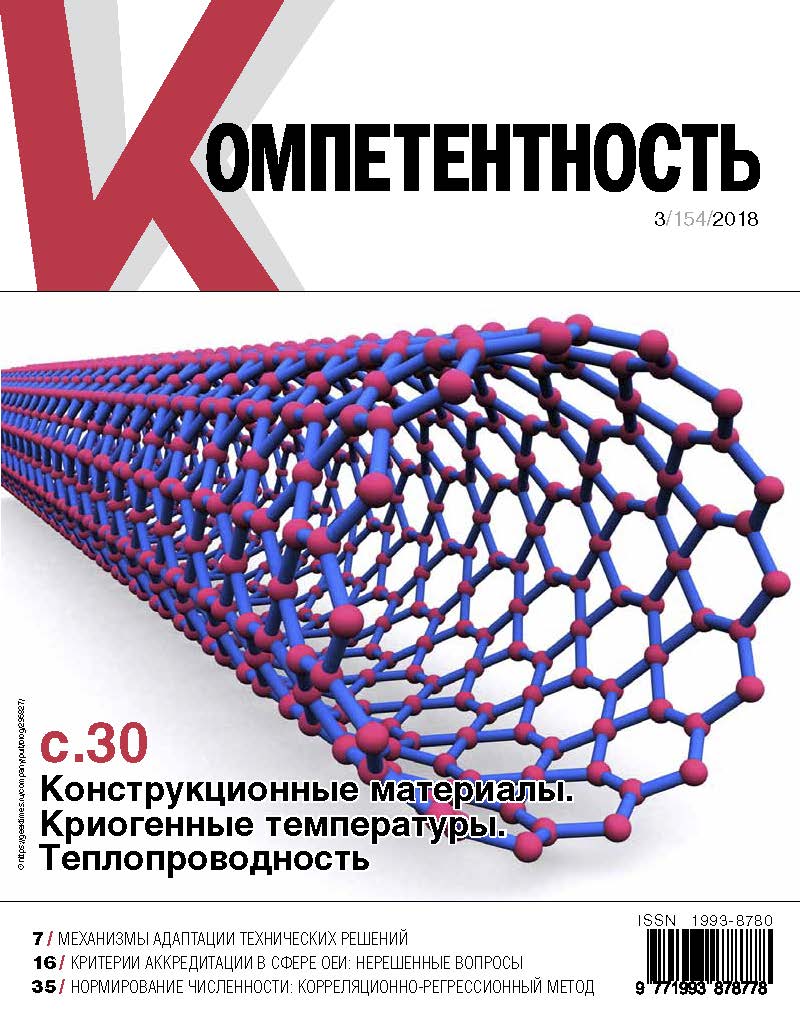 Undoubtedly, the progress of human civilization has always been based on useful innovations
Undoubtedly, the progress of human civilization has always been based on useful innovations
and continues to be determined by breakthrough revolutionary and evolutionarily
improving social, biological, technical and so on processes that occur in society and
innovations. These innovations are realized in the form of constructive, technological
and other measures, constantly leaping or gradually at the root of the changing quality
of life of the inhabitants of the globe and are manifested in expanding the areas of application
of automated production processes in all sectors of the economy without exception,
uniting them into unified complexes. Logistics, the processing of huge amounts
of information and support the effective operation of household, communal and other
public services vehicles. These production and servicing complexes, on the one hand,
improve the quality of life, and on the other hand, simultaneously by their side harmful
products negatively affect the environment, worsening the conditions of existence.
As a result, risks of both local technogenic catastrophes and global climate changes
in the form of irreversible warming are added to natural cataclysms and social risks.
Overcoming these risks at the present time is the most urgent and priority task,
without the speedy effective solution of which it is difficult to imagine the normal
continuation of civilization, we are confident.
Download



